Episode 39: Anti-slip mats Part 2: Avoiding application errors
After describing the technical boundary conditions for anti-slip mats based on VDI-2700 Sheet 15 in the previous blog, the following article deals with their practical application.
The guideline does not mention this and there are also few book writers who deal with this matter from a practitioner's perspective.
I will try to put my experience into concrete examples. Basically, it is never wrong to work with anti-slip mats (ARM) when securing loads. In most cases, they bring more advantages than disadvantages.
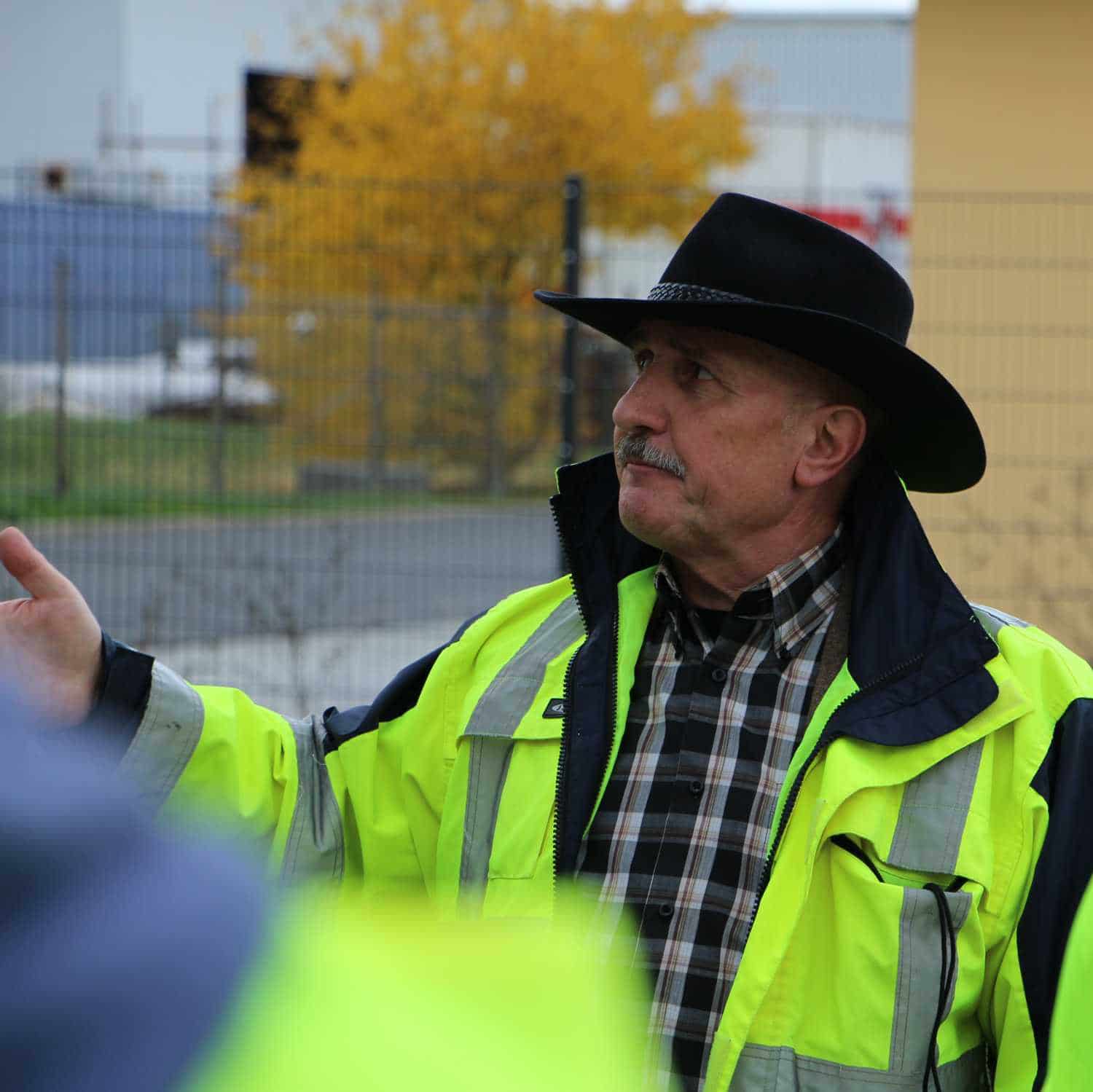
About the author:
In a series of specialist articles from the field, on topics relating to containers and trucks, you will receive first-hand professional knowledge.
How to secure cargo correctly and what are the basics of cargo securing?
They are developed and presented by Sigurd Ehringer, owner of SE-LogCon:
- VDI certified instructor for load securing
- Reference book author
- 8 years Project Manager
- 12 years with the Bundeswehr (company commander)
- 20 years of sales experience
- since 1996 consultant/trainer in logistics
- 44 years instructor/trainer in various fields
Episode 39: Anti-slip mats Part 2: Application errors
The question is often asked as to how thick the mats should be. The wise answer is that it depends.
In purely mathematical and theoretical physical terms, the thickness of the mats is irrelevant. Practically, however, it is.
The ARMs must ensure that the two surfaces, namely the loading surface and the load parts/load carriers that touch the loading surface, are separated from each other via the mats. The technical term for this is decoupling.
Take, for example, a uniformly packed Euro pallet weighing 1,000 kg.
- If, for example, 3 mm thick mats are available, then all three feet of the pallet would have to be completely underlaid with ARM. That would be approximately 0.414 square meters.
- If 8mm thick mats with 150x200mm were available, 9 pads would possibly suffice, an area of 0.27 square meters.
- Strips measuring 200x1200mm and 8mm thick would also be an elegant solution.
The costs are always based on weight, even if a price/piece is stated in the offer. However, the price is not the decisive factor, but the safe handling and the safe result.
There are enough accidents where the truck driver corrects the ARM again and the forklift driver puts the pallet on his fingers because he didn't see him.
There are various ways in which anti-slip mats (ARM) can be laid. Here are a few examples:
The most complex method is shown on the right. Here, 9 ARM pads must be placed precisely in order to decouple the load from the loading surface.
It is particularly necessary if the ARMs are very thin (less than 4 mm).
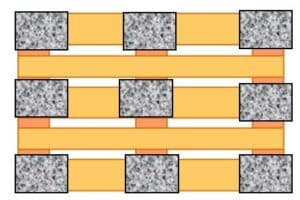
This scheme is also required if the ARMs are thin. Another disadvantage is that they cannot be easily corrected.
They usually cannot be pushed because they are not stiff enough. They therefore have to be lifted and repositioned.
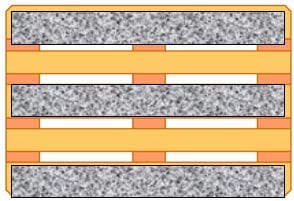
This scheme can be used if the mats are at least 8 mm thick and the pallet is evenly packed and loaded.
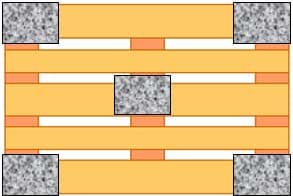
This scheme is also possible if the ARMs are at least 8 mm thick, 200 mm wide and 800 mm long. Here too, the positioning must be reasonably exact.

This is the elegant solution if the ARMs are at least 8 mm thick, 200 mm wide and 1200 mm long. The big advantage is that the ARMs do not have to be laid precisely, because the pallet always has enough contact surface so that it is decoupled from the loading area.
With this scheme, the next pallet can also be placed on the protruding strips. Corrections are not necessary with a little experience.
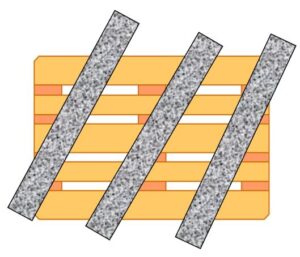
The aim must always be to decouple the loading surface and the load carrier.
The picture on the right shows a clear gap between the load carrier and the loading area.
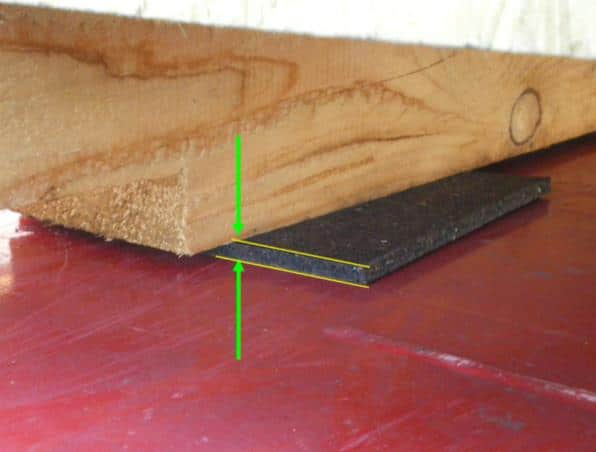
This picture also shows that thicker ARMs produce a better result than thin ones.
The dimensionally stable plastic pallet is decoupled from the loading area with two ARM strips.
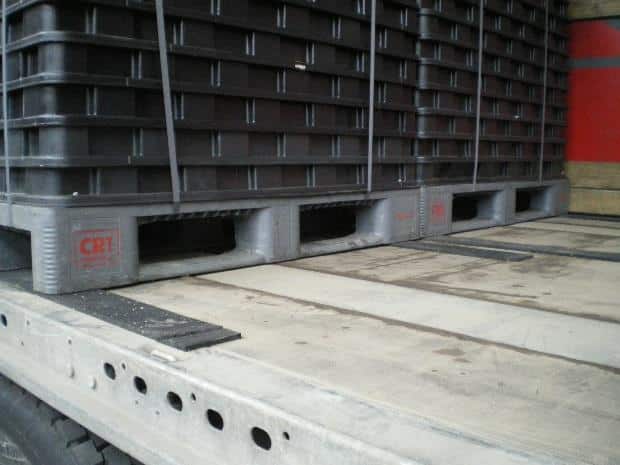
Inappropriate installation of the ARMs often results in their effectiveness being greatly reduced or non-existent.
Those involved believe they have a sense of security that does not actually exist.
One of the most common causes is the loading area not being "swept clean". The ARMs are placed on the dirt that is more or less present on the loading area.
This results in a layer between the ARM and the loading surface, which partially prevents the interlocking and thus the mini-form closure.
The coefficient of friction is therefore no longer μ=0.6, but less. None of the parties involved knows how much less, but the value 0.6 is assumed.
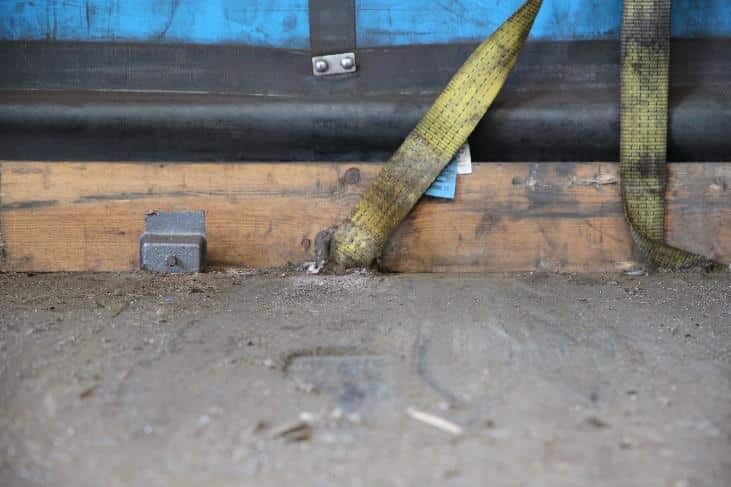
The following examples show other situations that reduce the effect of the ARM:
Anti-slip mats that have long since been discarded are still used.
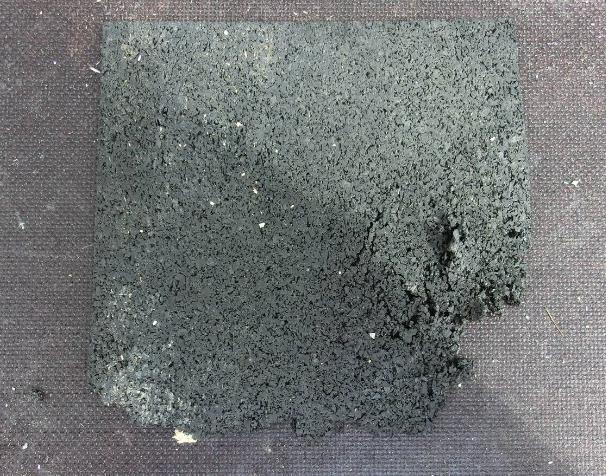
Under load, the ARM must not deform more than 30% of its thickness.
In the picture on the right, this specification is far exceeded.
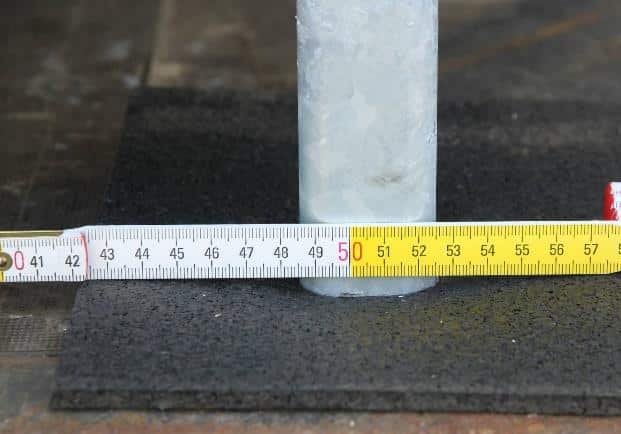
The result is cut-outs like the one on the right.
The base of the loading frame therefore stands on the loading surface without increased friction.
The effect is zero.
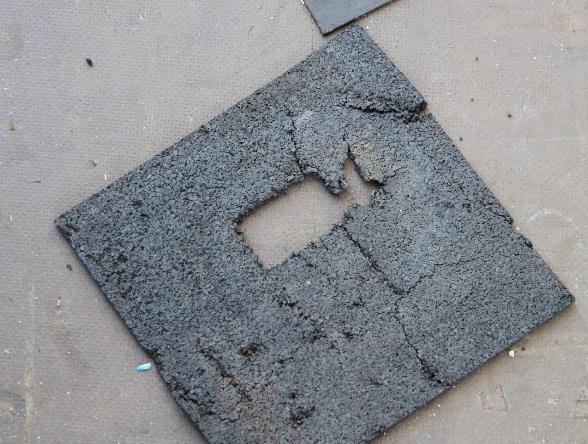
Another example of the same situation.
The problem can be solved with various measures:
1. close the feet of the loading frame or the system to create a larger surface.
2. calculate the size of the contact area so that the surface pressure on the ARM is reduced and punching is prevented.
3. use heavy-duty ARM.
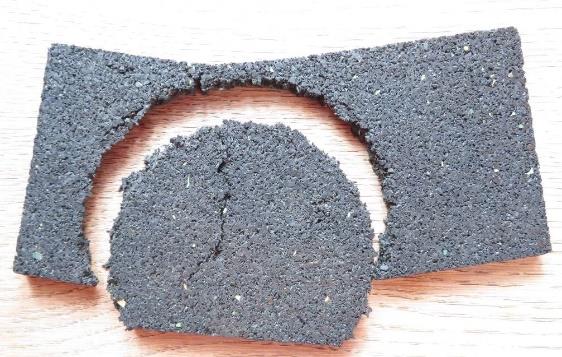
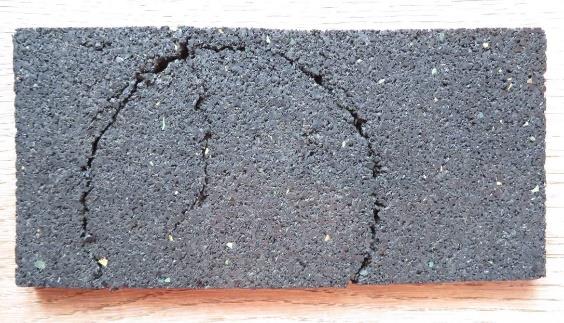
Caution should also be exercised when using ARMs that are not made of rubber granules.
When new, they have a very high coefficient of friction.
Some manufacturers specify a value of μ=0.8. However, they are very susceptible to dirt and dust.
They should therefore only be placed immediately before setting down the load.
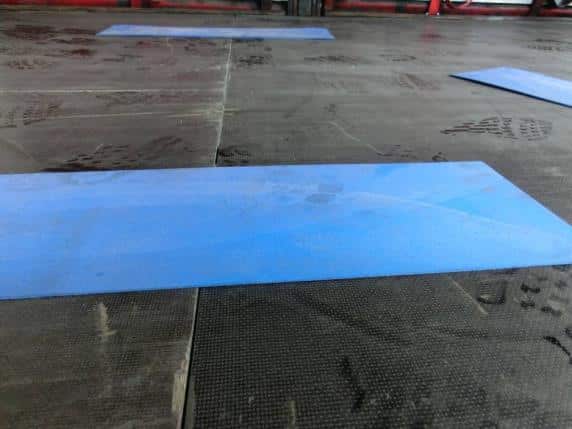
After one or more uses, some of these ARMs look like the picture on the right.
The anti-slip coating dissolves and the effect or the high coefficient of friction is no longer given.
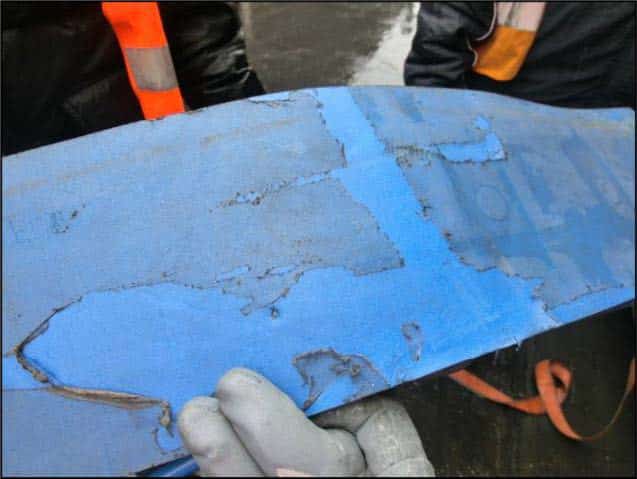
If ARMs are used, the load must always be additionally secured by lashing it down. The reason for this is the vertical accelerations that occur when driving over uneven road surfaces, potholes, kerbs, bumps, tarred edges, etc. These reduce the normal force with which the load presses against the loading surface. They reduce the normal force with which the load presses against the loading surface, reducing the coefficient of friction and thus also the frictional force.
Loads with low tipping stability start to tip immediately when ARMs are used. Without ARMs, such a load would first slip and then tip. This tipping is also prevented by lashing down.
Here is an example:
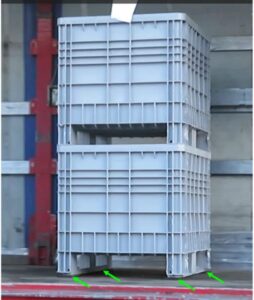
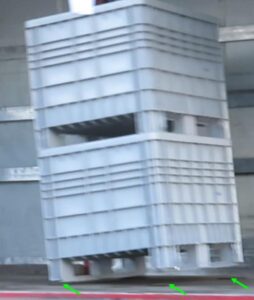
The actual, perceived or estimated coefficient of friction plays a major role in inspections by the authorities. When calculating the securing measures, it can make a considerable difference whether a value of 0.6 or 0.5 is used. The result can be that the load securing is assessed as correct or a fine is imposed because it was carried out inadequately.
Everyone involved should therefore address the issue and ensure that the coefficient of friction is always as high as possible.
Measures for this include
- Preparation of the swept clean loading area
- Checking the anti-slip mats for discard maturity
- Specification of a load-dependent loading scheme
- Specification of the size and number of ARMs required
- Secure the load additionally by lashing it down
Your Sigurd Ehringer.

Small thing, big effect. I recommend a test with and without the anti-spill mat.
Once you have seen the effects live, you are happy to put up with the extra effort.
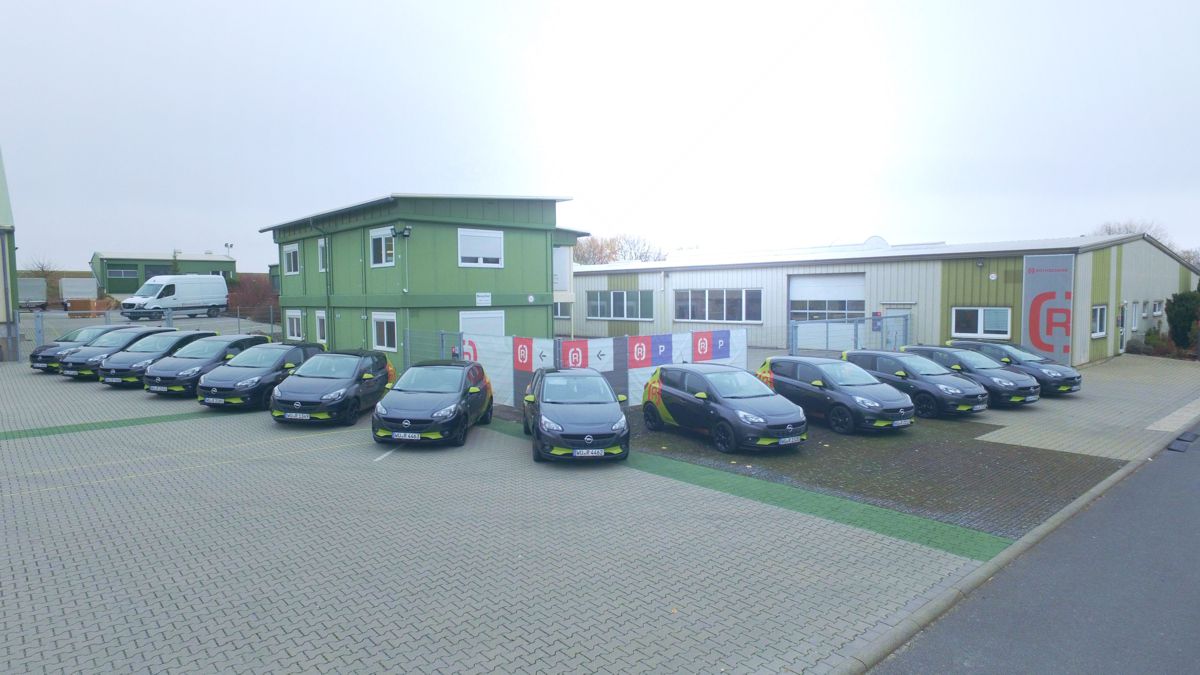
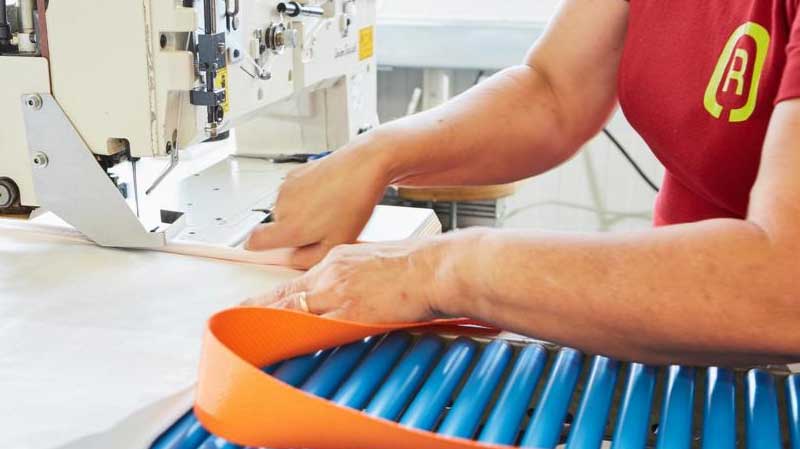
On our own account:
Rothschenk. That's us.
Rothschenk is a manufacturer of load securing equipment for overseas containers. In the tranquil town of Aub in central Franconia, we develop, test and sell our own load securing equipment such as dunnage bags/padding, Lashing restraint systems, Edge Protectors, Anti-slip Mats, Lashing Straps and drum securement. You can get a small insight into our product world in our Online Shop: [R] SHOP24.
We develop for our customers, to whom also large corporations e.g. from the CHEMICALS-, BEVERAGES- and Automotive industry belong, individual load securing. Therefore we are used to come up with new products and solutions in our own research and test department.
We stand for quality "Made in Germany„. Not only in development, but also in production. Because we are the only manufacturer for load securing with our own production site in Germany. Real "Made in Germany" even.
>> Please use the comment function below for suggestions, additions and also for further questions.
We will, of course, respond promptly and professionally. Your Rothschenk Team


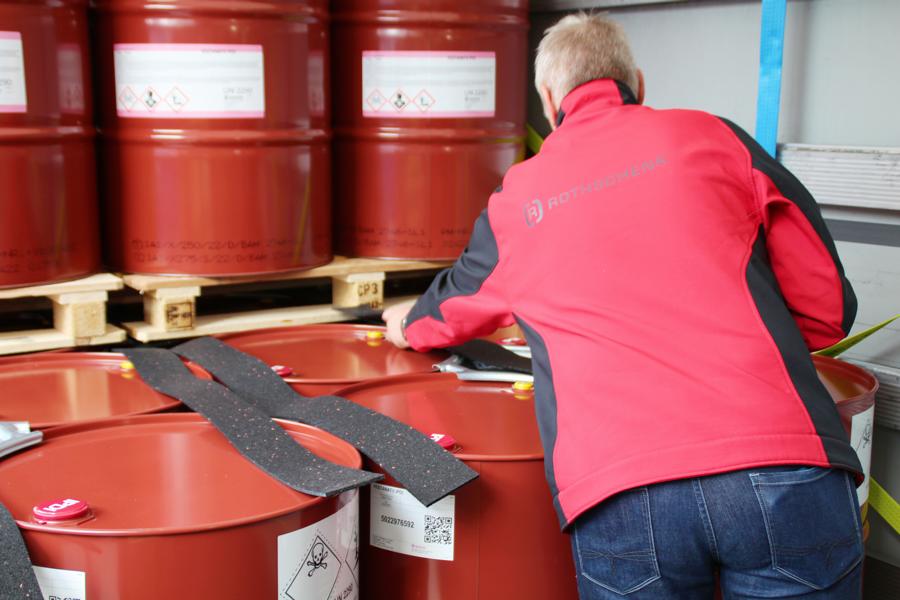
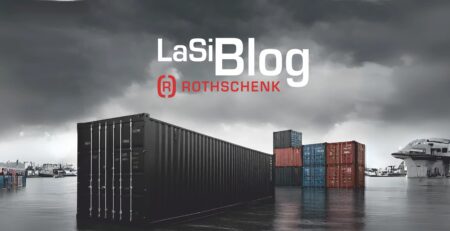
Schreibe einen Kommentar